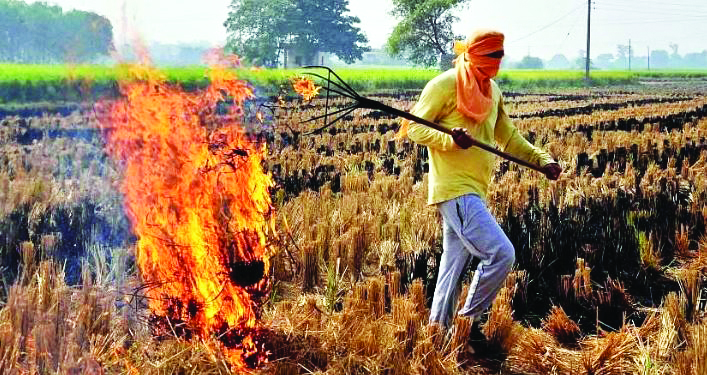Delhi govt reaches out to Punjab, Haryana to combat stubble burning

New Delhi: In a bid to combat the annual scourge of stubble burning and its ensuing pollution, the Delhi government after unveiling a comprehensive Winter Action Plan, has additionally taken proactive steps by reaching out to neighbouring states of Haryana and Punjab, aiming to address the issue and restrict the use of firecrackers during the upcoming winter months.
This comprehensive plan is part of the government’s ongoing efforts to address the critical issue of air quality in the national capital.
In preparation for this initiative, the Delhi government will be writing letters to the neighbouring states, including Haryana and Punjab, urging them to collaborate in addressing the issue. Letters detailing these concerns will be dispatched within the next 7-8 days.
One of the key components of the plan involves the use of bio decomposer sprays, a method from previous year employed to tackle stubble burning. Officials from the Environment department have confirmed that the spraying process will commence in October.
‘To ensure effective implementation, the Delhi government has directed the district wise Agriculture officers to reach out to farmers across the city to determine their requirements for bio decomposer spray.
A form has been distributed to collect this information, with responses expected by the first week of October,’ an official from the Environment department stated.
‘Last year, approximately 5019 square feet of land was treated with bio decomposers, and this year’s efforts aim to cover even more land,’ he added. Moreover, in cases of severe pollution, construction activities may be temporarily paused to mitigate the release of pollutants. The government has already identified 15 focus points to guide its pollution-reduction efforts.
During a recent meeting on Thursday with officials from various departments, 15 focus points were identified to form the basis of the Winter Action Plan. These points include addressing hotspots, dust pollution, industrial pollution, vehicular pollution, open waste burning, green initiatives, real-time apportionment studies, and more.
Each focus point has been assigned to specific departments or agencies responsible for implementing measures to combat pollution.
The Environmental Minister Gopal Rai earlier highlighted the success of previous measures, which had led to a significant reduction in PM 10 and PM 2.5 levels as well as an increase in the number of days with good air quality.
Additionally, the data from the past years reveals that on Diwali in October 2022, stubble burning contributed to a substantial 5-8% of Delhi’s overall PM2.5 pollution levels. The preceding year in 2021, farm fires accounted for a staggering 25% of the PM2.5 pollution during Diwali in the capital.
The situation was similarly dire in 2020 when farm fires contributed to 32% of the pollution on the festival of lights. In 2019, the figure stood at 19%.



